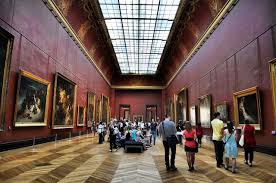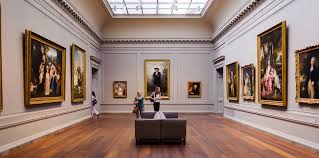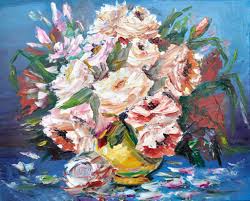HISTORY OF THE DEVELOPMENT OF THE DUTCH AND FLEMAND STILL LIFE (part 2)
 The developed manufactory, which arose on the basis of marine industries and shipping, a huge colonial economy and a leading role in world trade, provided Holland with an economic upsurge. Natural sciences are being developed to cater for the increased needs of the economy. Culture is blooming. Holland is becoming the center of European typography, and its universities enjoy universal fame. Significant successes are made by fiction, professional Dutch theater appears, outstanding works arise in the field of architecture, graphics flourish, and finally, the most characteristic, specifically Dutch art – painting reaches unprecedented heights.
The developed manufactory, which arose on the basis of marine industries and shipping, a huge colonial economy and a leading role in world trade, provided Holland with an economic upsurge. Natural sciences are being developed to cater for the increased needs of the economy. Culture is blooming. Holland is becoming the center of European typography, and its universities enjoy universal fame. Significant successes are made by fiction, professional Dutch theater appears, outstanding works arise in the field of architecture, graphics flourish, and finally, the most characteristic, specifically Dutch art – painting reaches unprecedented heights.
We pay tribute to the brave Dutch seafarers, respect the achievements of Dutch opticians and doctors, philosophers and lawyers, but Dutch painters have overshadowed their glory for centuries. Holland painting is the truly invaluable contribution that the people of a small country have made to the world treasury of human achievements.
Dutch painting was not only a leading art form, but also the most important form of ideological struggle for a new society. The most advanced and most humane ideas of the time and national interests received their highest embodiment, the life of Dutch society was reflected with the greatest depth and fullness, and the artistic genius of the Dutch people was most clearly manifested.
From the point of view of ideological features, Dutch painting of the 17th century differs from painting in any other country
first of all, with its pronounced democratic orientation, consistent realism and life-affirming optimism.
The influence of Calvinism was manifested not only by the academic classification in the field of the “higher” genre – historical painting, it also affected the development of the “lower” genres of Dutch art that had reached their peak. The division into “higher” and “lower” genres was alien to Dutch realism. The reverse phenomenon was observed in the development of Dutch painting – it was precisely the “lower” genres that occupied the leading place in it – portraiture, everyday painting, landscape and still life.
Dutch painters were able to prove that a large, saturated with vitally important art can exist in diversity, prosaic everyday life and contain no less worthy subjects.
The appeal to the image of a contemporary and the concrete reality surrounding him infinitely expanded the scope and possibilities of Dutch fine art, and the theme of modernity became its leading theme.
Altar images for churches, as a rule, were not written in Holland. The painting on a religious theme was not an icon here; rather, it had the character of an illustration for the deeply revered “Holy Scripture” and decorated not a church, but a private home. Therefore, the interpretation of religious topics was inherent in a secular, genre character.
The theme of religious paintings in Calvinist Holland was of a substantially different nature than in the Catholic countries of Europe. There were almost no images of saints, but, like nowhere else, attention was paid to the Old Testament plots. The Old Testament was very well known to the Dutch. Starting from the sixteenth century, illustrated Bibles were distributed here, and in the seventeenth century, the Bible in the mother tongue was a handbook in every home, where it was practiced daily reading in the family circle.
The Dutch, who won the battle against a much stronger enemy, considered themselves, like the ancient Israelites, the “chosen god” people. The Dutch war with Catholic Spain was equated with the struggle of the Israelis against foreign idolatrous tyrants.
Drawing parallels between the events of biblical history and the political destinies of the Netherlands has become generally accepted and legitimized for Dutch literature, journalism, theater, and visual arts.
Already in the field of the historical genre, one could note the desire to instill the civil qualities of the burgher of the first bourgeois republic on the examples of his heroic past, the Bible or ancient history. But if historical painting was called upon to form the high civic feelings necessary for the motherland at the moment of danger, then other genres brought up the qualities necessary in everyday life and in everyday life.
Many subjects of the domestic genre were directed against motivation, wastefulness and mismanagement; against venal love when robbing gullible simpletons or when old people, having forgotten about decency, seek with the help of money to regain the joys of youth.
The portrait genre, especially its characteristic share of Holland variety – group portrait, not only reflected the growth of national identity and corporate community of interests, but also contributed to the development of a sense of collectivism, pointed to the social functions of man in the life of the nation.
The landscape genre, like the animal genre, took part in the upbringing of love for the motherland. The illustrious Dutch cows grazing in the fat flood meadows were a source of pride and an indicator of the country’s well-being.



